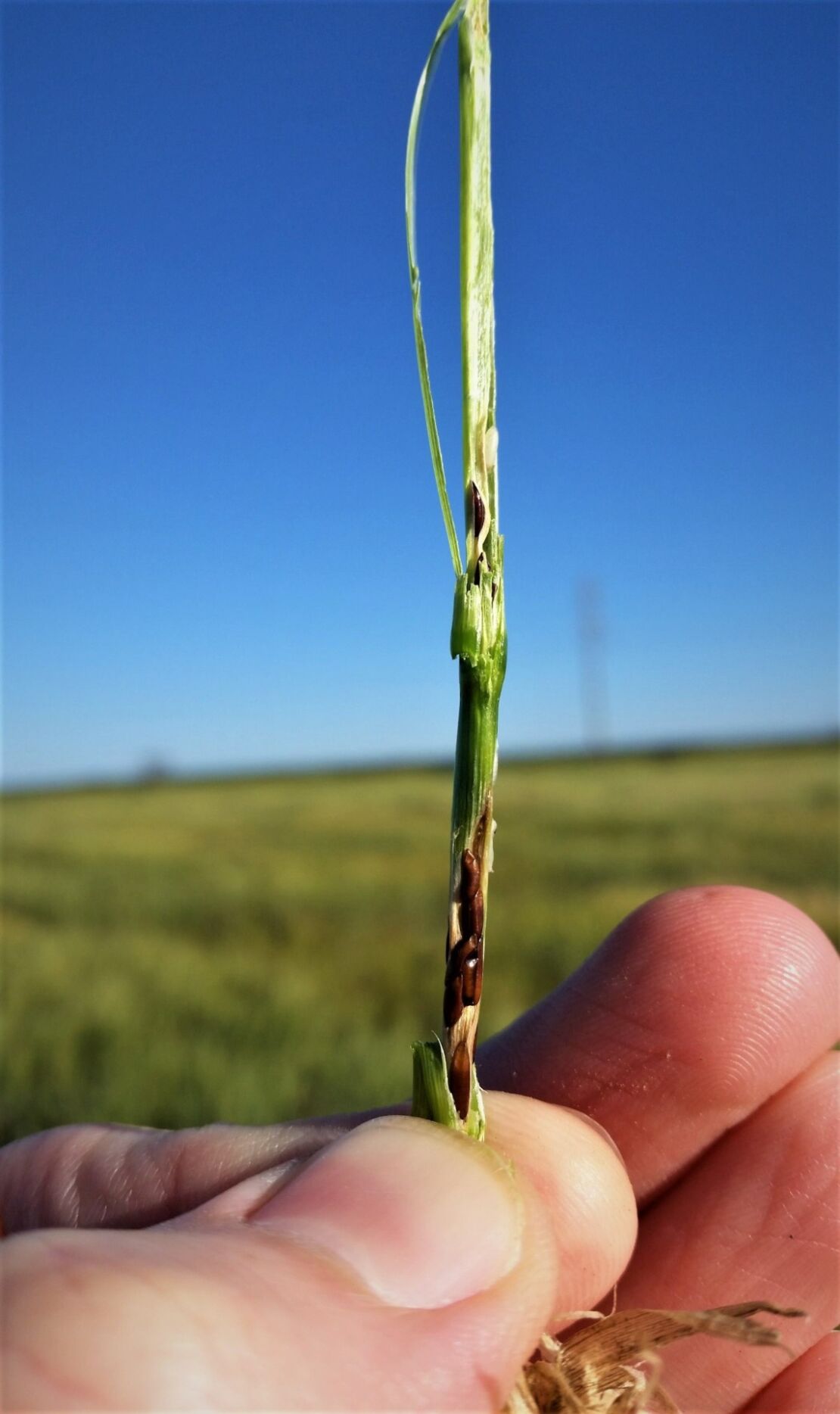Hessian fly infestations appear to be a widespread issue for wheat producers in parts of Central Texas and the Blacklands region this year, according to Texas A&M AgriLife Extension Service experts.
A report by AgriLife Extension integrated pest managers and agronomists between North Texas, College Station and San Angelo noted Hessian fly infestations of varying degrees. Areas between the Blacklands region and North Central Texas were reporting above-average infestation incidence and damage by the pest.
David Drake, AgriLife Extension integrated pest management specialist, Commerce, said he has received numerous calls to look at infested wheat fields. Infestations around the state have been site-specific, but above-normal temperatures and dry fall weather likely allowed pest numbers to build. Some fields were likely to be salvaged for forage, while others were expected to be plowed under and replanted with other crops.
The Hessian fly is a small fly that can severely damage wheat and other small grain crops like barley and rye during its larval stage. There are several wild host-plant species for the Hessian fly including quack grass, western wheatgrass, goat grass, timothy and other wild grasses.
The cigar-shaped larvae have a creamy white body with a green streak down the middle of its back. After feeding for some time, the larva forms a puparium, which ranges in color from dark brown to black and resembles a flaxseed.
Common damage symptoms of Hessian flies included death of young tillers, stunting and lodging. Prevention is the only way to keep Hessian fly pupae from impacting wheat yields, Drake said.
“Some infestations are more severe than I have ever seen,” Drake said. “We typically don’t see infestations that bad, but once fields are infested there’s really not much you can do.”
Stop Hessian fly with crop rotation, later planting, wheat variety
Drake said crop rotation in fields and nearby fields is necessary to mitigate Hessian fly infestations. Cropping wheat to wheat in the same fields should be avoided. Timing of wheat planting is also a contributor to infestation potential.
Fly eggs are deposited near the base of plants between September and December, depending on temperatures. Pupae emerge three to 10 days later depending on temperatures and move between the leaf sheath and stem to set up feeding sites in the crown of the plant or just above the node in jointed wheat.
Drake said AgriLife Extension specialists recommend grain producers delay planting until late-October or November to avoid flies depositing eggs. He also suggested rotating in warm- season crops like sorghum, cotton and corn to rid the field of wheat stubble where infestations can build.
“We tell most wheat grain producers to put off planting until flies are no longer a problem, but a lot of wheat is planted early as a dual-purpose crop for winter grazing and summer grain,” he said. “That can be a problem with back-to-back wheat. That is why rotation is important.”
Drake said there are Hessian fly tolerant wheat varieties, including TAM 204, which is a dual-purpose wheat, that can reduce tiller damages. AgriLife Extension specialists recommend producers look for Hessian flies in wheat fields and evaluate infestations, subsequent damage and the wheat variety’s ability to withstand feeding and yield loss.
Producers should consider the stage of progress, soil moisture conditions, yield potential and whether they can plow the field under and plant warm-season crops. Those with crop insurance should discuss options with their agent.
“It’s been a tough year for wheat producers in some areas. A lot of wheat acres were droughted out,” he said. “Having a Hessian fly infestation in a field that might be perking up adds insult to injury.”



